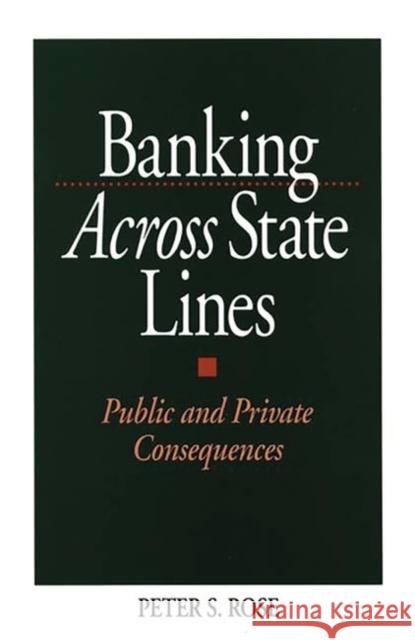Banking Across State Lines: Public and Private Consequences » książka
Banking Across State Lines: Public and Private Consequences
ISBN-13: 9781567200072 / Angielski / Twarda / 1997 / 192 str.
With full-service nationwide banking on the verge of becoming a reality in the U.S., here is a thoughtful analysis of how it emerged and what its effects will be. Dr. Rose is frankly skeptical. He sees advantages but he also predicts significant disadvantages, mainly in the form of possibly higher fees and reduced personal attention for consumers of banking services. His book provides the best summary available of the research findings to date and one of the best summaries of new federal interstate banking rules enacted by Congress and signed into law in 1994. This is an important book not only for executives engaged in government-relations work throughout the financial services industry, and for those engaged in marketing and strategic planning, but also for public policy people in the private and public sectors.
Dr. Rose opens his book with an overview of the trend in U.S. banking towards a consolidated banking system similar to those in other industrialized nations, particularly Canada, Great Britain, and Germany. He identifies causes of this movement toward consolidation, attributable to governmental interventions and the exigencies of the private sector marketplace. He reviews the long history of federal and state restrictions against interstate banking and then explains how laws passed in the 1990s are permitting giant nationwide banking companies to emerge. What does this mean for the public, bankers, and investors? Less than what people think and have hoped for. Dr. Rose warns that many of the benefits expected from interstate banking will probably be nonexistent or at best meager. His book will certainly prove to be a vital resource for anyone involved in the banking industry and for those who influence it.











